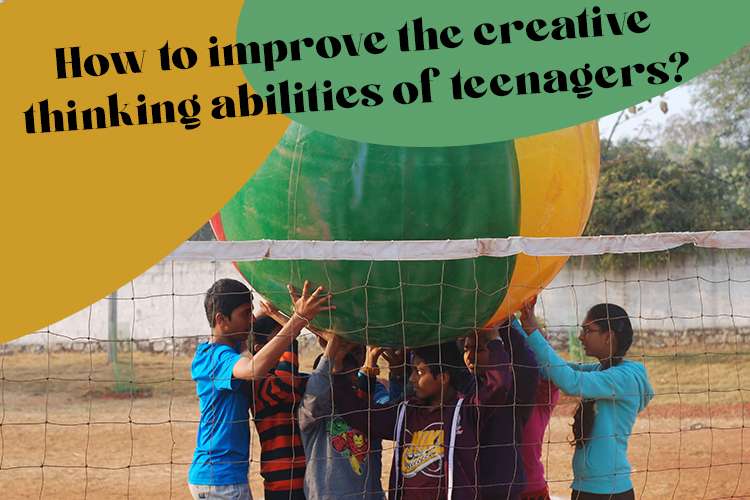What is creativity?
Creativity, at its core, is the ability to conceive and generate novel ideas. It involves looking at things from diverse perspectives, breaking free from conventions, and exploring uncharted mental territories. Importantly, creativity isn’t confined to the realms of art or music.it permeates all aspects of life. Whether it’s decorating a home, managing finances, or solving intricate workplace challenges, creativity plays an essential role.
Benefits of creative thinking –
Enhanced Mental Well-being: Engaging in creative activities significantly impacts mental health by reducing stress and anxiety, boosting overall happiness, and releasing feel-good neurotransmitters like dopamine and serotonin.
- Improved Job Performance: In today’s competitive job market, individuals with creative problem-solving skills stand out and increase their chances of securing desirable positions.
- Path to Success: Creativity frequently leads to innovative ideas, paving the way for success in various fields.
- Improved Relationships: Creative thinking fosters better communication and relationship-building skills, as it encourages viewing situations from multiple angles and finding inventive solutions.
- Heightened Empathy: Creative individuals often exhibit a heightened sense of empathy, leading to deeper connections with others and their surroundings.
- Adaptability: Creative thinking equips individuals with the ability to adapt and thrive in ever-changing personal and professional circumstances.
- Increased Happiness: Engaging in creative activities infuses a sense of playfulness and mindfulness into life, encouraging people to savor the process rather than fixate on outcomes.
- Positive Impact on Physical Health: Creative expression has been linked to improved physical health, bolstering immunity and promoting faster recovery from illness or injury.
- Longevity: Surprisingly, engaging in creative pursuits may contribute to a longer, healthier life by potentially delaying the onset of age-related diseases and mitigating the effects of stress.
- Contributing to a Better World: Creativity holds the potential to effect positive change through innovative ideas that lead to new products, services, and ventures, ultimately improving people’s lives and inspiring others to explore new horizons.
In essence, creativity is not merely a desirable attribute; it serves as a catalyst for a happier and more fulfilling life. Whether one is creating art, solving complex problems, or contemplating life’s mysteries, creativity enriches existence in countless ways. Embarking on this journey unlocks boundless potential.
Fostering a creative environment –
Creativity is not exclusive to teenagers; adults can embrace it too. It is crucial for adults to maintain their creative thinking to keep their minds active and innovative.
To cultivate creativity in your family, consider the following tips:
- Game Time: Engage in creative games and activities like board games, puzzles, arts and crafts, as they stimulate imagination and innovation.
- Adventure Seekers: Encourage exploration by introducing your children to new places, cuisines, and literature outside their comfort zones.
- Expressive Freedom: Provide tools for creative expression, such as blank canvases, clay, or writing materials, to allow their imagination to flourish.
- Lead by Example: Demonstrate your creativity through your own creative activities, inspiring your children to join in.
- Dedicated Creative Space and Time: Create a distraction-free environment for creative activities and allocate daily playtime for creativity.
Whether young or old, fostering a creative-friendly environment benefits the entire family, facilitating the flow of creative ideas and innovation.
Making connections and asking questions –
Building connections and asking questions are valuable skills that enhance creativity. Whether forging friendships or exploring the world, these skills are invaluable.
One effective way to supercharge these skills is to make asking questions a habit. Questions serve as bridges, promoting understanding and strengthening bonds in conversations with friends, family, and even strangers.
Additionally, journaling is a powerful tool for making connections and reflecting on experiences. Writing down thoughts and adventures acts as a map to uncovering connections that might have otherwise gone unnoticed.
Encouraging teenagers to step out of their comfort zones and try new things can further stimulate creativity. Embracing the unknown can lead to personal growth and unexpected discoveries.
Teaching creative problem-solving –
Brainstorming is a well-known method for fostering creative problem-solving. By encouraging the free flow of ideas from participants, brainstorming sessions generate innovative solutions to challenges.
To teach creative problem-solving, conducting regular brainstorming sessions can be highly effective. These sessions allow students to practice generating ideas and provide educators with insights into their thought processes.
Music is another potent tool for tapping into creativity. Engaging in music, whether through composition or performance, can help students unlock their creative potential and devise unique solutions to problems.
Overall, the key to teaching creative problem-solving is to inspire students to think beyond conventional boundaries and enjoy the process.
Taking on creative challenges –
Overcoming creative challenges can yield a profound sense of accomplishment and personal growth. To approach creative challenges effectively:
- Set Achievable Goals: Establish realistic objectives to maintain motivation and avoid discouragement.
- Allocate Adequate Time: Plan and prepare adequately, avoiding last-minute rushes that can lead to stress and lower-quality work.
- Get Organized: Maintain a clear plan of action to stay on track and prevent overwhelm.
- Take Breaks: Periodic breaks help recharge mental and emotional energy, enabling a fresh perspective on challenges.
- Persevere: Creative challenges may become difficult, but remembering the initial motivation and the satisfaction of completion can help push through the toughest moments.
Exploring the arts –
The arts are a vibrant part of life, encompassing various forms of expression:
- Visual arts: Including two-dimensional (paintings, drawings) and three-dimensional (sculptures, architecture) forms.
- Performing arts: Encompassing musical performance and composition, as well as non-musical performance such as acting and comedy.
- Literary arts: Spanning fiction (novels, sci-fi) and non-fiction (biographies, history books).
- Media arts: Split into digital (graphic design, websites) and analog (film, television) categories.
Every one of these domains of art presents a distinct journey for discovery. Whether one holds a fervor for visual arts, performing arts, literary arts, or media arts, there are boundless chances to immerse oneself in the realm of imagination and expression.
Getting out and experiencing the world –
In an age of digital immersion, it’s important to encourage teenagers to step away from screens and explore the world. This can be achieved through:
- Outdoor Activities: Visit local parks, embark on hikes, or explore natural settings to experience the world without technological distractions.
- Enrollment in Classes or Activities: Sign your teenager up for classes or activities that align with their interests, fostering creativity through active engagement.
- Travel: Exposure to new cultures, people, and adventures broadens horizons and provides fresh perspectives on life, even through short weekend getaways.
By helping teenagers engage with the world, you enable them to tap into their creative potential and create meaningful memories.
Encouraging imagination –
Imagination is the secret ingredient to creativity, a vital skill for personal growth and future success. To nurture your teenager’s imagination:
- Creative Activities: Encourage them to participate in creative endeavors such as painting, writing, or music.
- Daydreaming: Create a supportive environment where daydreaming is encouraged, allowing their minds to wander freely.
- Ask “What If” Questions: Encourage them to ask imaginative “what if” questions that spark creativity and inspire unique ideas.
- Lead by Example: Demonstrate your own openness to new ideas and cheer them on in their creative pursuits.
Fostering your teenager’s imagination is an investment in their creative superpowers, empowering them to excel when creativity matters most.
Fostering creativity in teenagers is a key investment in their well-being and future success. By encouraging activities like games, arts, and exploration, you create an environment that nurtures imagination. Creative thinking not only enhances mental health but also builds skills crucial for today’s competitive world. Through simple steps like asking questions, trying new things, and setting achievable goals, teens can develop problem-solving abilities. Embracing the arts and experiencing the world further enriches their creativity. In supporting their imagination, you’re empowering them with a tool for lifelong success. So, lead by example, create a space for creativity, and watch as your teenager’s creative superpowers unfold. In the end, fostering creativity is not just a journey; it’s a gift that keeps on giving, preparing them for a brighter and more fulfilling future.


